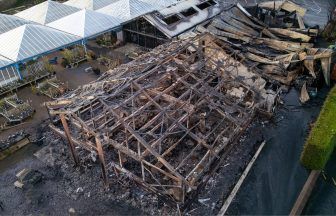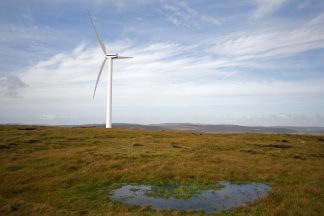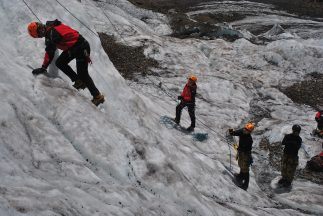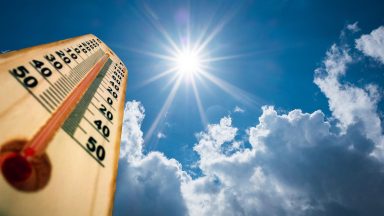Next week is set to be Scotland’s hottest of the year so far, according to forecasts.
The area of high pressure which has brought fine conditions across the UK over the last few days is forecast to extend out toward the end of the month.
There haven’t been any prolonged spells of weather where temperatures have peaked in the 20s so far this spring.
The top temperature of the year so far was 21.6C, recorded at Urquhart in the Highlands on May 13.
But Scotland looks like it could be the warmest part of the country next week with temperatures as high as 26C.
“High pressure looks like settling over Scotland next week with much warmer conditions developing, and it looks like the west of Scotland will often be the warmest part of the UK with temperatures peaking in the mid-20s,” STV meteorologist Sean Batty said.
“While it’ll be warm in the west, a gentle on-shore air flow in the east will hold temperatures back there.
“This means places such as Peterhead, Stonehaven, St Andrews and Dunbar may remain in the mid-teens while the heat builds in the west.”
Sean expects Oban Dornie, Torridon, Kinlochewe and around Lairg in the north Highlands to be the hottest, with temperatures reaching as high as 26C in the right conditioned.
Further south, areas around Glasgow and Ayrshire will likely see highs in the low to mid 20s.
With the sun out and the mercury rising, it’s worth remembering to protect your skin, said Sean.
“With just four weeks until the summer solstice, UV levels are now peaking at level six, which is about as high as it gets in Scotland, apart from exceptional days where it can reach 7 around the end of June and early July.
“This means burn times are down to around 30 minutes.”
Pressure is expected to remain highest in the north of the UK into June meaning Scotland is the most favourable spot for drier conditions compared to England and Wales.
Earlier this month, the Scottish Environmental Protection Agency warned water shortages could be possible this summer with some parts of the country already recording low river levels and dry ground conditions.
But with most areas around 80-90% of normal, they are not an issue at the moment, Sean said.
“But this could start to drop sharply if pressure remains higher in the north over the coming weeks and months, with little appreciable rainfall,” he added.
Last year, the environment watchdog suspended abstraction licences for some growers for the first time.
Follow STV News on WhatsApp
Scan the QR code on your mobile device for all the latest news from around the country




























